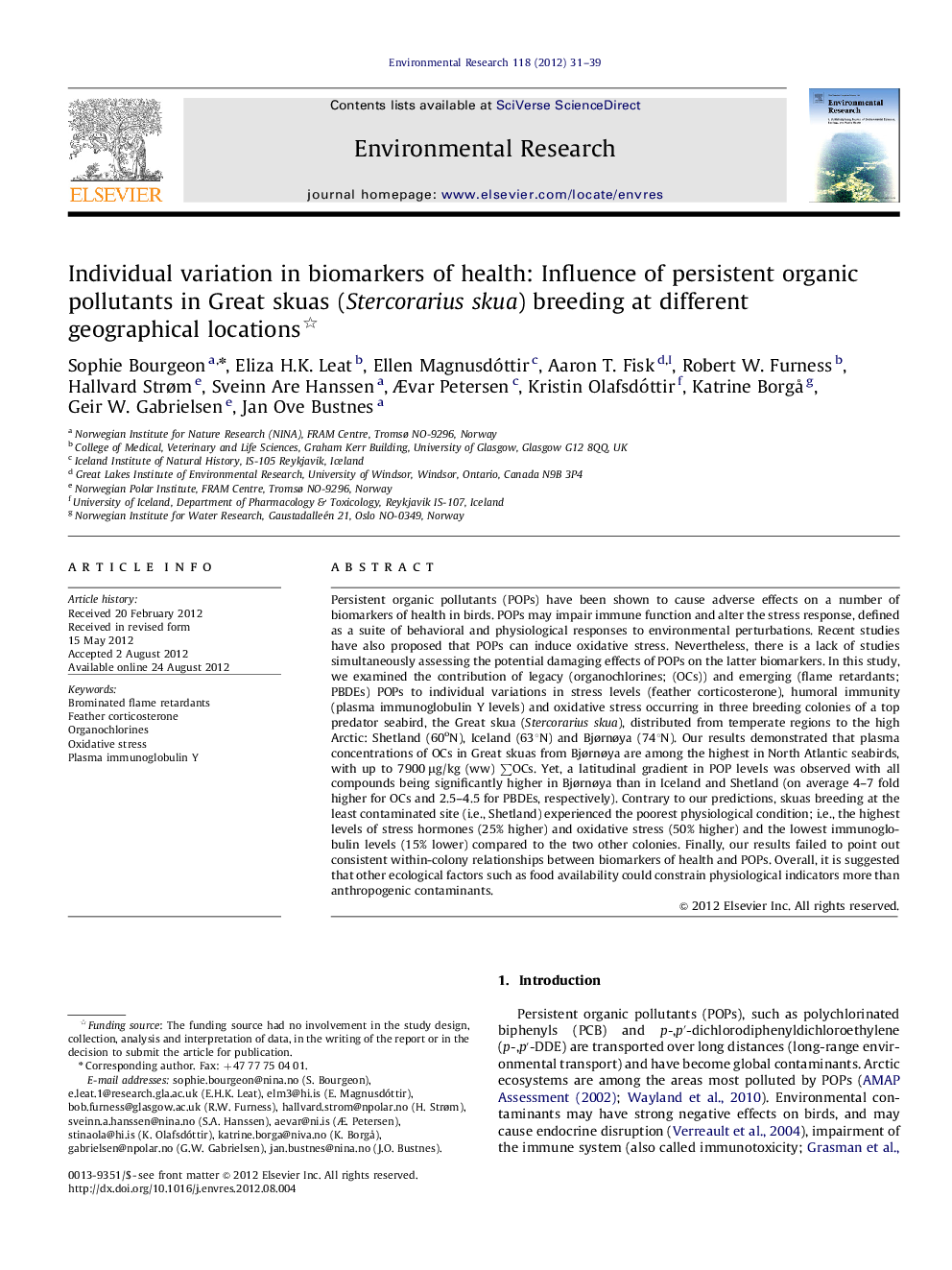| Article ID | Journal | Published Year | Pages | File Type |
|---|---|---|---|---|
| 4469979 | Environmental Research | 2012 | 9 Pages |
Persistent organic pollutants (POPs) have been shown to cause adverse effects on a number of biomarkers of health in birds. POPs may impair immune function and alter the stress response, defined as a suite of behavioral and physiological responses to environmental perturbations. Recent studies have also proposed that POPs can induce oxidative stress. Nevertheless, there is a lack of studies simultaneously assessing the potential damaging effects of POPs on the latter biomarkers. In this study, we examined the contribution of legacy (organochlorines; (OCs)) and emerging (flame retardants; PBDEs) POPs to individual variations in stress levels (feather corticosterone), humoral immunity (plasma immunoglobulin Y levels) and oxidative stress occurring in three breeding colonies of a top predator seabird, the Great skua (Stercorarius skua), distributed from temperate regions to the high Arctic: Shetland (60oN), Iceland (63°N) and Bjørnøya (74°N). Our results demonstrated that plasma concentrations of OCs in Great skuas from Bjørnøya are among the highest in North Atlantic seabirds, with up to 7900 μg/kg (ww) ∑OCs. Yet, a latitudinal gradient in POP levels was observed with all compounds being significantly higher in Bjørnøya than in Iceland and Shetland (on average 4–7 fold higher for OCs and 2.5–4.5 for PBDEs, respectively). Contrary to our predictions, skuas breeding at the least contaminated site (i.e., Shetland) experienced the poorest physiological condition; i.e., the highest levels of stress hormones (25% higher) and oxidative stress (50% higher) and the lowest immunoglobulin levels (15% lower) compared to the two other colonies. Finally, our results failed to point out consistent within-colony relationships between biomarkers of health and POPs. Overall, it is suggested that other ecological factors such as food availability could constrain physiological indicators more than anthropogenic contaminants.
► We compare biomarkers and persistent organic pollutants (POPs) in seabird colonies. ► Great skuas show among the highest plasma organochlorine levels in the N Atlantic. ► Birds from the least contaminated colony show the highest physiological stress. ► There are no consistent within-colony relationships between POPs and biomarkers. ► Food resources might account more than pollutants for variations in biomarkers.
